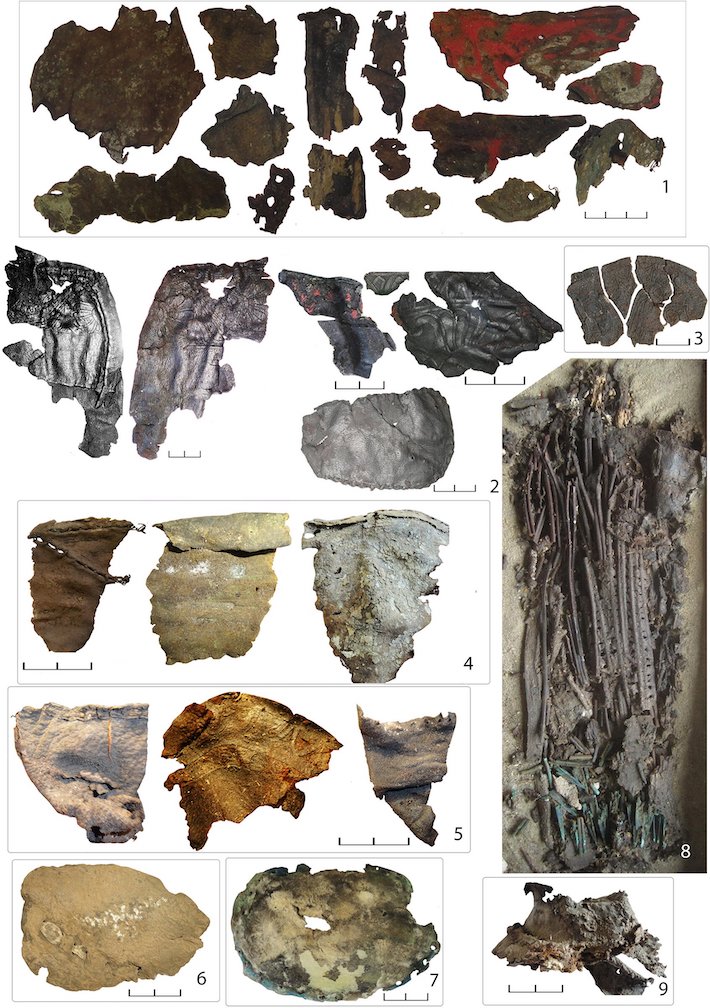 COPENHAGEN, DENMARK—Phys.org reports that an international team of researchers led by Luise Ørsted Brandt of the University of Copenhagen analyzed 45 of the proteins in leather samples unearthed at 14 Scythian sites with a variety of paleoproteomics techniques in order to test an account written by the ancient Greek historian Herodotus. The Scythians were warriors and equestrians who lived on what is now the Pontic-Caspian steppe between about 700 and 300 B.C. Herodotus wrote that the Scythians sometimes drank the blood of their slain enemies, wiped blood from their hands with their enemies’ scalps, and may have even made leather for their quivers with the skin of an enemy’s right hand. The study found that all but two of the Scythian leather samples were made from the skins of horses, cattle, and goats or sheep. The remaining two samples, thought to have been placed on the tops of quivers made of animal leather, had a human source. Read the original scholarly article about this research in PLOS ONE. To read about evidence for a Scythian hilltop ritual, go to "Rites of the Scythians."
COPENHAGEN, DENMARK—Phys.org reports that an international team of researchers led by Luise Ørsted Brandt of the University of Copenhagen analyzed 45 of the proteins in leather samples unearthed at 14 Scythian sites with a variety of paleoproteomics techniques in order to test an account written by the ancient Greek historian Herodotus. The Scythians were warriors and equestrians who lived on what is now the Pontic-Caspian steppe between about 700 and 300 B.C. Herodotus wrote that the Scythians sometimes drank the blood of their slain enemies, wiped blood from their hands with their enemies’ scalps, and may have even made leather for their quivers with the skin of an enemy’s right hand. The study found that all but two of the Scythian leather samples were made from the skins of horses, cattle, and goats or sheep. The remaining two samples, thought to have been placed on the tops of quivers made of animal leather, had a human source. Read the original scholarly article about this research in PLOS ONE. To read about evidence for a Scythian hilltop ritual, go to "Rites of the Scythians."
Scythian Leather Samples Studied
